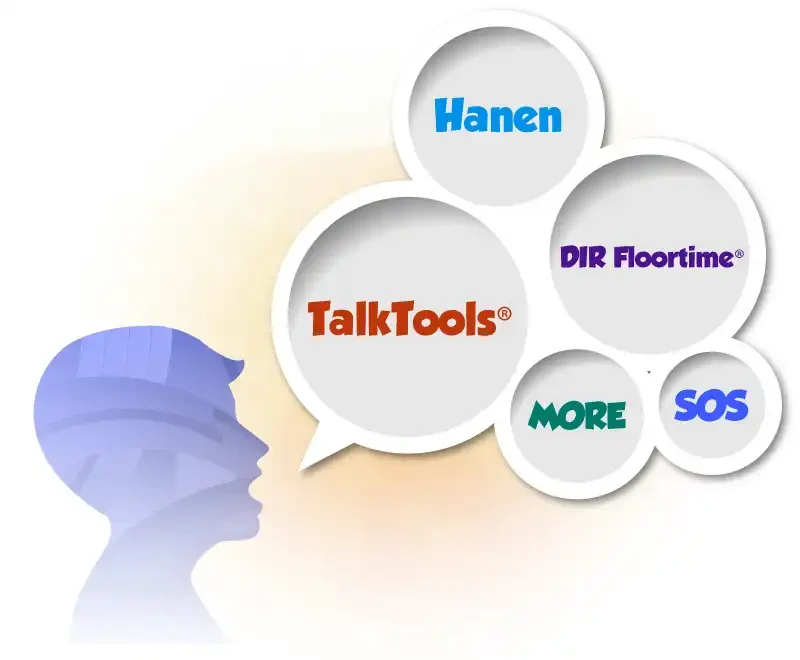Every child is different, and therefore we provide an individualized intervention plan. We maximize progress in speech, language and communication by combining the most recent evidence based research and treatment methods.

We maximise the child’s progress in speech, language and communication by combining the latest and most effective treatment methods. Our Speech-Language Therapists are trained and experienced in a variety of popular treatment modalities, which include:
- Hanen Programs
- It Takes Two To Talk
- More Than Words
- TalkAbility
- Social Thinking
- PECS (Picture Exchange Communication System)
- DIR Floortime®
- Sequential Oral Sensory (SOS) Approach to Feeding
- Lidcombe Program
- Nuffield Dyspraxia Program
- PROMPT
- TalkTools®
Key collaborations are important in the child’s therapeutic journey at Dynamics Speech. We strongly believe that parents and caregivers play a vital role in the success of the child’s therapy. They can provide support and reinforcement in learning when the child is at home. As such, we actively partner with the child’s parents and/or primary caregivers and support them through parent training, relevant resources and maintain regular and open communication throughout the child’s therapy.
We also ensure the child receives integrated care and support, if needed, through seamless and effective collaborations with Dynamics’ in-house multidisciplinary team of healthcare professionals.
At the age of 9, Ella’s parents brought her to a speech therapy assessment concerned about her speech clarity. Ella often struggled to convey her thoughts clearly, causing frustration for both her and her parents. This challenge not only affected her ability to communicate effectively but also resulted in teasing at school. Over time, Ella’s confidence dwindled, leading her to withdraw from conversations with friends out of fear of being misunderstood.

During the assessment, the speech therapist employed various techniques, including an oral examination and formal assessments, to pinpoint Ella’s specific speech disorder and error patterns. Collaborating closely with Ella and her parents, the therapist crafted a comprehensive plan aimed at refining Ella’s speech accuracy and restoring her confidence.
Taking a personalized approach, the therapist guided Ella through targeted exercises and strategies to tackle her speech errors.
With dedication and practice, Ella learned to articulate sounds she previously struggled with and overcome her speech patterns. Equipped with techniques to self-monitor her speech, Ella gained confidence in expressing herself not only in therapy but also in her everyday conversations. The therapist provided a nurturing environment, fostering Ella’s confidence and enabling her to practice without fear of judgment. Additionally, Ella and her parents learned techniques to reinforce progress at home and apply speech strategies across different settings.
Ella’s perseverance yielded remarkable results. Her speech accuracy notably improved, allowing her to speak more fluidly and express herself with clarity. This positive transformation bolstered her self-assurance, leading to a newfound comfort in conversing with friends. Observably, Ella became more engaged in discussions with both peers and family. After several months of dedicated efforts, Ella achieved all her speech goals, prompting her discharge from therapy—a moment of great joy for her parents.
Ella’s journey vividly illustrates the profound impact of speech therapy on a child’s self-esteem and overall communication skills, paving the way for a brighter and more confident future.
Note: The identities of the individuals mentioned in the success story have been altered to maintain confidentiality.